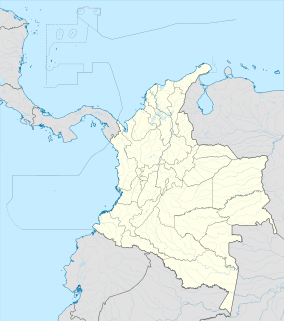Cueva de los Guácharos facts for kids
Quick facts for kids Cueva de los Guácharos |
|
|---|---|
|
IUCN Category II (National Park)
|
|
| Location | Huila & Caqueta, Colombia |
| Nearest city | |
| Area | 90.78 km2 (35.05 sq mi) |
| Established | November 9, 1960 |
| Governing body | SINAP |
The Cueva de los Guácharos National Natural Park is Colombia's very first national park! Its name means "Cave of the Oilbirds" in English. This special place was created on November 9, 1960.
You can find this park on the western side of the Eastern Andean Mountains in Colombia. It stretches across two departments: Huila and Caquetá. The park covers about 90 square kilometres (35 sq mi), which is a huge area! The amazing caves here were formed by water flowing through karst rock near the Magdalena and Caquetá rivers.
The main goal of this park is to protect important natural areas. These include the cool, misty cloud forests and the unique high-altitude grasslands called páramo ecosystems. It's also home to one of the last untouched oak forests in Colombia. Here, you can find native oak trees like Quercus humboldtii and Trigonobalanus excelsa.
What Animals Live in Cueva de los Guácharos?
This park is full of amazing wildlife! It's especially known for its many different kinds of birds. In 2005, experts counted 296 different bird species living here. But birds aren't the only animals you'll find.
Mammals of the Park
The park is a safe home for several interesting mammals. Some of these animals are quite rare or even threatened.
- Churuco Monkey (Lagothrix lagotricha lugens): This monkey lives in the high Amazon valley.
- Corn Monkey (Cebus apella): You can find this monkey in the Andes and Amazon regions.
- Marimonda (Ateles paniscus): This monkey lives in the middle and lower Amazon valley.
- Páramo Deer (Mazama americana and Mazama rufina): These deer are found in the Neotropic region.
- Rabbit Deer (Pudu mephistophiles): This small deer lives in the northern Andes, from Ecuador to southern Colombia.
- Páramo Tapir (Tapirus pinchaque): This large animal is also found in the northern Andes and is considered threatened.
See Also
 In Spanish: Parque nacional natural Cueva de los Guácharos para niños
In Spanish: Parque nacional natural Cueva de los Guácharos para niños


